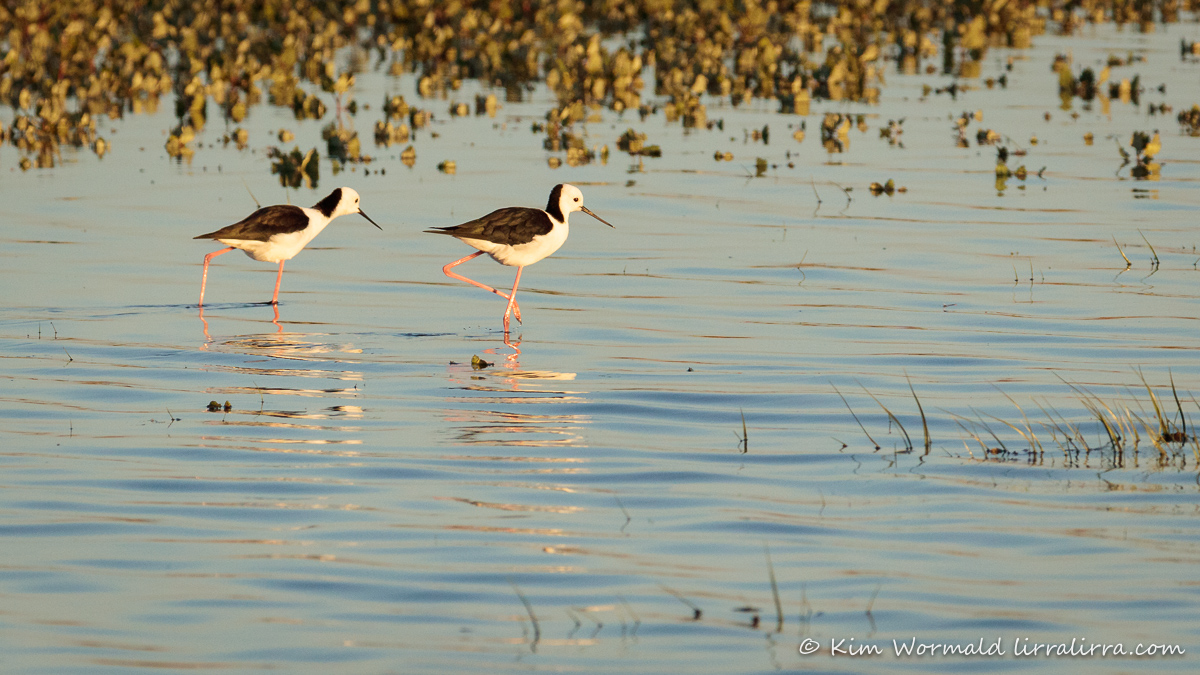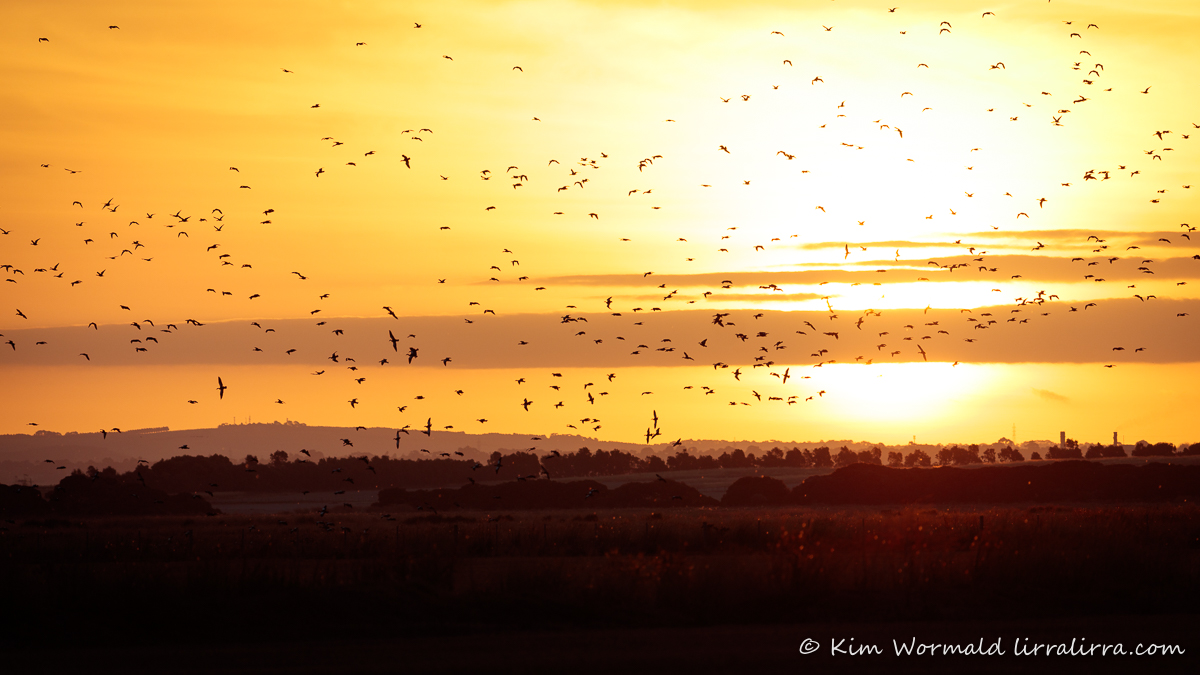The Western Treatment Plant at Werribee is a place of solace, the moment I lock the gate behind me I’m immersed in a world of wonder.
Fairy Martin (Petrochelidon ariel)
1/1250, f/7.1, ISO 800
Fairy Martins are similar to Welcome Swallows but quite a bit smaller, 11cm/11g vs 15cm/15g respectively. I find their head markings exquisite with dark flecks on different coloured backgrounds. They don’t always sit still for very long so I was pleased to capture a photograph of this little beauty.
Fairy Martins catch insects on the wing, often large flocks will swoop and dive across the sky.
Golden-headed Cisticola (Cisticola exilis) – male
1/1600, f/7.1, ISO 1600
I always feel especially lucky to capture a shot of a Golden-headed Cisticola. They are such comical little bundles of feathery sunshine. The male birds have a golden orange crest during the breeding season which makes them look resplendent. They are slightly smaller than the Fairy Martins, 10cm/10g. They often splay their legs to perch, bracing themselves on spindly perches to help keep their balance on windy days.

White-headed Stilt (Himantopus leucocephalus)
Formerly: Black-winged Stilt (Himantopus himantopus)
1/2000, f/7.1, ISO 1600
Stilt are one of the most graceful species on the planet. They are so delicate and their movements would look fantastic set to music; maybe it should have been Stilt Lake instead of Swan Lake, though probably not, I can already hear the dissent!
They feed on insects in and on the water, stirring them up as they rapidly wade across the shallows. The rippling reflections changed constantly and picked up the colour of the setting sun.
White-faced Heron (Egretta novaehollandiae)
1/1000, f/6.3, ISO 800
This watchful White-faced Heron was foraging beside a pond where a number of frogs were silly enough to be calling. It occasionally darted its strong bill into the grasses but think it must have been catching grasshoppers and smallish insects as I wasn’t able to see anything larger.
I enjoy watching herons when they sway their necks back and forth, snake-like, but this individual just watched and waited before stabbing its bill into the grasses.
Talking of snakes, I generally see Tiger Snakes at the treatment plant and on this visit I saw the largest specimen I’ve ever seen. It appeared to be almost a metre and a half long and was way fatter than any Tiger Snake I’ve seen. It must have just shed its skin as it looked stunning as it slithered across the track and disappeared.
Brown Falcon (Falco berigora)
1/500, f/5.6, ISO 6400
Just before sunset there was a backlit Brown Falcon perching on a weathered fencepost. Without the benefit of direct sunlight I needed to up the ISO to 6400. I like the way it’s tucking its right foot under its feathers. I also like the grass seed heads that were swaying gently in the breeze.
Brown Falcon are about 46cm and weigh a bit over half a kilogram. There is a range of plumage colours for the species, from very light to very dark.
1/500, f/5.6, ISO 200
Mixed flock of native waterbirds
And, as the sun was setting, this mixed flock of native waterbirds flew by to find somewhere to settle for the night. There are Australian Shelduck in the mix, along with possibly Pink-eared Duck, Blue-billed Duck and teal species – it’s hard to tell.
A day at the treatment plant was just what I needed, the weather was perfect in the low 20s, the company was great and the birds, as always, were stunning.
Happy birding
Kim
~ thank you for visiting and commenting
~ use the subscribe box if you’d like to receive a weekly email when lirralirra is updated






Hi Kim,
I have a good news lol, my husband and me decided to go to Australia in January. I look for places and see a lot of images in the web in this factory for bird watching ! That’s a really good idea, yes ! And of course your images are superb !
Kim does the Cisticola imitate the grass-hopper with its call. Beautiful photo of this little rough head.
What an interesting question! I’ve never thought that when I’ve been listening to them but they do have a kind of buzzing call sometimes if that’s what you mean.
Yes Kim, that buzzing call sounds very similar to a Grasshopper. I wouldn’t be surprised if the Grasshopper was a delicacy of theirs.
That’s a really interesting observation
Beautiful images, each one different from the other.
Thank you Diane. The treatment plant is the perfect place to see a range of species, I’m smiling just thinking about it.
Fantastic series of photos Kim, so pleased you had a great day.
Thanks Gary. I hope your hand has fully healed.
Lovely, thank you!
Thank you Donna
As you say, the birds are stunning, as is your photography once again, Kim.
I love everything about the photograph of the brown falcon. No doubt the hues of blue add to the attraction for me. Beautifully captured (photographically!)
Thank you Margot. I was quite taken with the blues myself, I’ve not seen a Brown Falcon with such blue legs and feet before but the lighting was interesting which probably made a difference.
Your descriptions are as beautiful as your photographs. Thank you.
Thank you for your kind comment Val
Morning Kim
Wonderful pics to accompany my breakfast this morning. We are off to Marion Bay on east coast of Tassie for a walk and hopefully see more of the Hooded Plovers we saw the other day, plus Pacific Gulls etc.
Have a lovely day,
Alison.
That sounds like a stunning walk! I hope you got to see some hoodies, and the gulls (but not too close together).
I can hear you just saying “ahhhhhh” in this post. I feel the need for that as well right now but alas, other than winter birds at the feeder will have to wait. I loved the heron, a new species of it for me so very glad you showed it. Of course all of your birds are just amazing!
Australia really does have a beautiful array of bird life but you get heaps of gorgeous species too, and now you have me wondering about your winter birds …
Lovely photos Kim.
Thank you Carole
These beautiful photos and wonderful birds take you to another place – magical.
Thank you Barbara. It really is magical to be out there with the birds, it re-charges my batteries. I think that maybe you feel the same way about nature.
What glorious pictures from a glorious day!
Glorious is the perfect word for the day
PS I’m glad you think it suits the images too